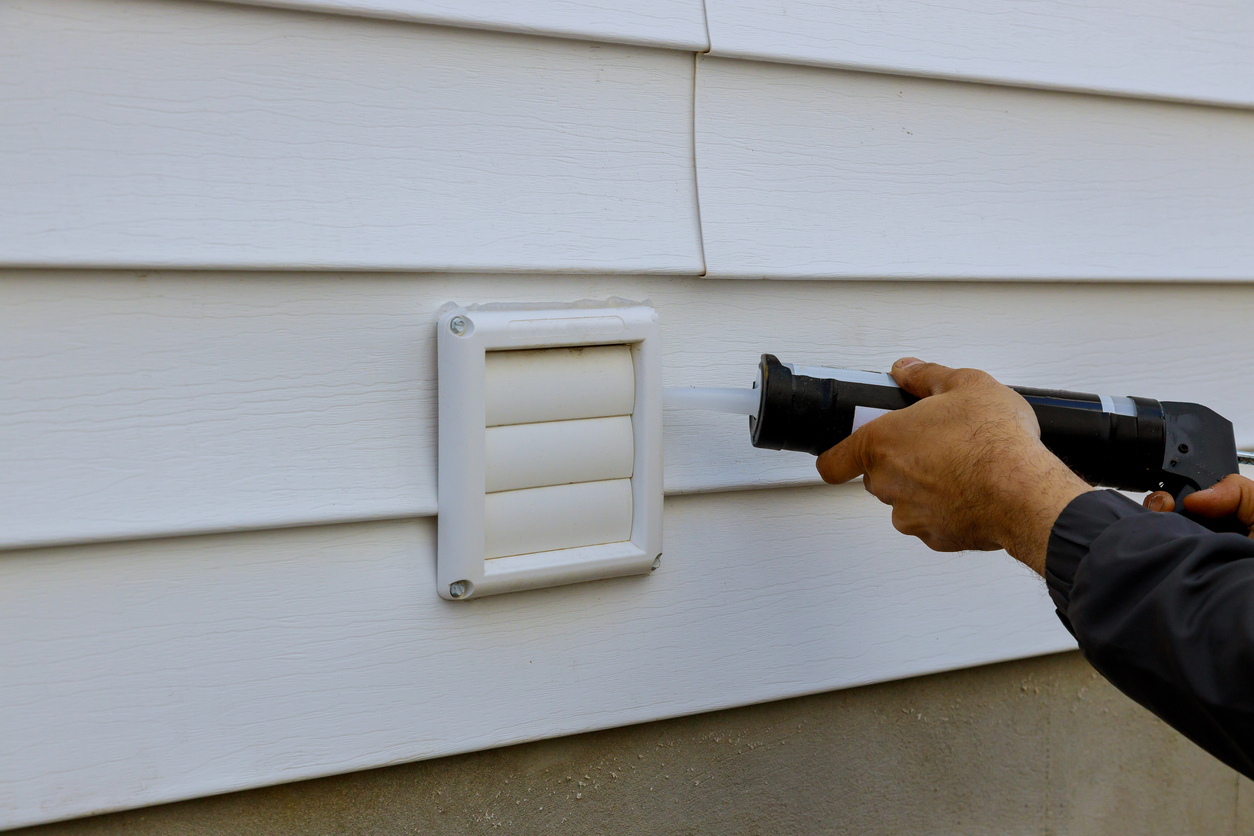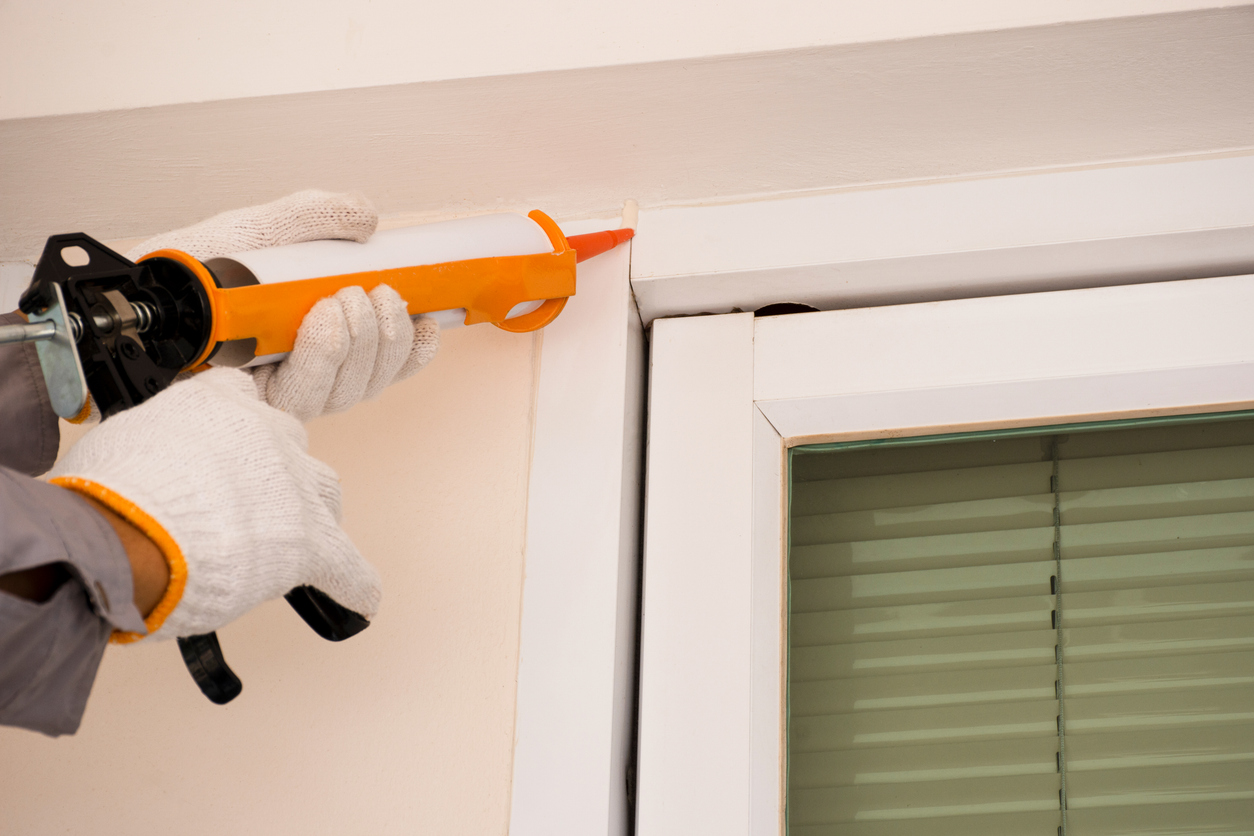Maintaining the exterior and interior of your home is crucial for any homeowner, especially in San Ramon where the climate demands it. One of the key elements in home maintenance that often goes overlooked is caulking. Though it might seem like a small detail, the impact of proper caulking is significant—it not only enhances the appearance of your home but also protects it from various elements, ultimately saving you money. In this article, we’ll dive into why caulking and painting are essential practices for your home’s upkeep and how they contribute to long-term savings.
Why is Caulking Important?
Caulking serves as a versatile tool in the arsenal of home maintenance, acting as the first line of defense against various home ailments. It’s more than just filling gaps; it’s about creating a seal that protects your home from the elements. Whether it’s rain, wind, or even pests, a good caulk job helps to keep them all at bay.
1. It prevents water damage
Primarily, caulking is essential for preventing water damage, one of the costliest repairs homeowners face. Water can seep into cracks around windows, doors, and other openings. Without proper sealing, this moisture has the potential to cause wood rot, mold, and mildew, all of which can compromise the structural integrity of your home and the health of its residents.
2. It enhances energy efficiency
Energy efficiency is another significant benefit of proper caulking. By sealing leaks around doors and windows, caulking keeps cold air out during the winter and cool air in during the summer. This insulation effect reduces the need for heating and cooling, lowering energy bills significantly over time.
3. It improves aesthetics and longevity
Moreover, caulking contributes to the aesthetic longevity of your paint job. By filling in gaps and creating a smooth surface, caulking ensures that paint adheres better and lasts longer. This not only improves the overall look of your home but also extends the intervals between paint jobs, providing further economic benefits.
In essence, the importance of caulking can’t be overstated. It enhances your home’s safety, efficiency, and appearance, all while keeping costs down. Now that we understand why caulking is so crucial, let’s explore when it’s necessary to apply it.
When is Caulking Necessary?
Caulking is not just a one-time task – it requires regular inspection and maintenance to ensure its effectiveness. Knowing when to apply new caulking is key to maintaining your home’s integrity and efficiency. Here’s how to identify the need for new caulking and which areas to pay special attention to.
1. Signs that You Need New Caulking
- Visible cracks and gaps: The most obvious sign that caulking needs to be replaced is the presence of visible cracks or gaps between surfaces. Over time, caulk can shrink, dry out, or even become brittle and break away, leaving spaces that can allow moisture and air to penetrate.
- Discoloration and mold: Any signs of mold or mildew near existing caulking can indicate that water is penetrating the barrier. Similarly, discoloration might suggest that the material is deteriorating and no longer providing a tight seal.
- Drafts and increased energy bills: Feeling a draft near windows and doors or noticing a sudden increase in heating or cooling bills can suggest that the seals are failing and it’s time to re-caulk.
2. Common Areas That Require Attention
- Windows and doors: These are the most common areas that need frequent re-caulking. They are highly susceptible to the outdoor elements and are the main points where air can escape or enter a home.
- Bathroom fixtures: Bathtubs, showers, sinks, and toilets should be regularly checked for old or missing caulk. These areas are prone to water exposure, which can seep into crevices and cause significant damage over time.
- Kitchen areas: Similar to bathrooms, kitchen sinks, countertops, and backsplash areas are frequently exposed to water and should have intact caulking to prevent water damage and mold growth.
- Exterior joints: Anywhere different materials meet on the exterior of your home, such as where siding meets windows or doors, or where chimneys and vents exit through the roof, are critical points for caulking.
- Interior trim: Baseboards, crown molding, and other types of trim often have caulk applied where they meet the wall or ceiling to create a smooth finish and prevent dust accumulation.
Do You Caulk Before or After Painting?
Deciding when to caulk in the process of painting is crucial for achieving both a visually appealing and durable finish. Understanding the best practices for timing caulking in relation to painting can significantly impact the effectiveness and longevity of your paint job.
Ideally, caulking should be done before painting. This sequence allows the caulk to fully seal any cracks or gaps, providing a smooth, uniform surface for painting. Here’s why this timing is important:
- Caulk tends to adhere better to unpainted surfaces. Applying caulk on a clean, dry, and non-greasy surface ensures that it forms a secure seal, reducing the likelihood of peeling or cracking over time.
- Caulk needs time to cure fully before it is painted over. If paint is applied too soon, the caulk might not set properly, which can lead to issues like cracking or sagging. Different types of caulk have different curing times, generally ranging from a few hours to up to a day.
- Applying caulk before painting ensures that the paint covers the caulk seamlessly, which helps in achieving a more professional and aesthetic finish. When caulk is applied after painting, it might not blend well with the painted surface and can be visibly noticeable.
Why the Timing Matters
The timing of caulking in relation to painting affects both the appearance and durability of the paint job:
- Sealing gaps: By caulking before painting, all gaps and cracks are filled, preventing moisture from penetrating beneath the paint. This is crucial for exterior paint jobs, as moisture can lead to paint failure and damage to the underlying material.
- Durability: Properly applied caulk can extend the life of the paint job by providing an additional layer of protection against environmental factors like UV rays, rain, and changes in temperature. This protective barrier reduces the stress on the paint, delaying the typical wear and tear.
- Aesthetic quality: Caulking before painting results in a smoother and cleaner appearance, as the paint helps to integrate the caulk into the overall surface. This leads to a more cohesive and appealing look.
How Caulking Saves Money
Investing in quality caulking and applying it correctly can lead to significant savings for homeowners. By extending the life of paint jobs and preventing various types of costly damage, caulking proves to be economically beneficial in the long run. Here’s how proper caulking contributes to these savings.
It extends the life of paint jobs
Properly applied caulk seals the gaps and cracks where moisture could enter, which is crucial in maintaining the integrity of a paint job. Moisture is one of the primary enemies of paint, causing it to peel, crack, and blister. By sealing these vulnerabilities, caulking keeps the underlying materials dry and intact, thereby extending the paint’s lifespan. This means that the intervals between repaints can be significantly longer, reducing the frequency, and thus the cost, of repainting.
It prevents costly damages
Caulking also helps prevent structural damages that can be expensive to repair. For example, without proper sealing, water can seep into walls and foundations, leading to mold growth and rot. The costs associated with fixing water damage can be extensive, often requiring more than just superficial repairs.
Also, gaps in windows and doors can lead to increased energy consumption. By sealing these leaks, caulking helps maintain indoor temperature, reducing the need for excessive heating or cooling and lowering energy bills.
Best Practices for Caulking
Caulking is a straightforward task that can yield significant benefits when done correctly. To ensure that your caulking job lasts long and provides maximum protection, follow these best practices, which include a step-by-step guide on how to properly caulk and tips for achieving professional results.
Step-by-Step Guide on How to Properly Caulk
- Choose the right caulk: Start by selecting the right type of caulk for your project. For outdoor projects, use a silicone-based caulk as it is weather-resistant and flexible. For indoor projects, a paintable acrylic latex caulk is often sufficient. Make sure the caulk you choose is suitable for the materials and conditions of your project.
- Prepare the surface: Clean the area where you will be applying the caulk. Remove old caulk, dirt, and grease. The surface should be dry to ensure good adhesion.
- Apply the caulk: Cut the tip of the caulk tube at a 45-degree angle to match the size of the gap you are filling. Insert the tube into a caulking gun. Apply the caulk smoothly and steadily, filling the gap completely. Avoid stopping and starting, as this can create a messy finish.
- Smooth the caulk: After applying the caulk, use a wet finger or a caulk-smoothing tool to press the caulk into the gap and smooth the surface. This step is important for creating a tight seal and a clean line.
- Let it cure: Allow the caulk to cure according to the manufacturer’s instructions before exposing it to any moisture or before painting over it. This could take anywhere from a few hours to a day.
Tips for Achieving Professional Results
- Avoid caulking in extreme temperatures or when rain is expected soon. Caulk performs best when applied in favorable weather conditions.
- For larger gaps, apply the caulk in multiple layers rather than trying to fill it all at once. Allow each layer to dry before applying the next.
- Use the right tools for smoothing caulk, such as a damp sponge or a dedicated caulk tool, to achieve a smooth, professional finish.
- If you’re new to caulking, practice on a piece of cardboard or scrap material to get a feel for the flow and speed required before you start on the actual area.
- Regularly inspect old caulking around your home and touch up any areas where the caulk has failed or deteriorated. Early maintenance can prevent bigger problems later.
Conclusion
Proper caulking is a critical but often overlooked aspect of home maintenance that offers numerous benefits, from enhancing the appearance and durability of paint jobs to preventing costly structural damages and improving energy efficiency. By following the best practices for caulking outlined above, homeowners can ensure their efforts are effective and long-lasting.
However, achieving the perfect seal and professional finish can sometimes be challenging without the right experience and tools. If you’re unsure about tackling this task on your own or simply want to ensure it’s done right the first time, consider enlisting professional help.
Custom Painting Inc. specializes in both caulking and painting services, providing top-quality workmanship that protects and beautifies your home. Contact us today by calling 925-866-9610 or through an online form to schedule a consultation and let us help you enhance and preserve your home with our expert caulking and painting services.



